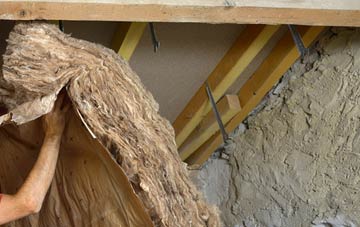Pitched Roof Insulation in Cundy Cross - Costs & Free Quotes
Table of Contents
Save energy with approved Cundy Cross pitched roof insulation installers
Even when attic space is not being inhabited, it still makes good sense to consider good quality insulation. Most Cundy Cross homeowners can realise big savings on their energy bills not to mention the fact that properly placed insulation can also improve air flow. In order to maximise the benefits of Cundy Cross pitched roof insulation, it’s important that contractors don’t skip any steps in the process of doing so.
Providing roof insulation quotes to Cundy Cross residents since 2010!

Pitch Roof Insulation and Energy Savings
The biggest benefit to adding insulation to a pitch roof is the energy savings you’ll enjoy. Remember that insulation is designed to create a barrier between your home and the outdoors. This means that air you’ve paid to heat or cool will stay inside your home, giving your heating system a break. On average, Cundy Cross homeowners can save as much as 25% on their annual heating and cooling costs by adding more insulation to their roofs, floors, and outside walls. This figure depends on the amount and type of insulation that is already present in your home. Some South Yorkshire homeowners will save more, and others will save less. In almost every case, though, adding more insulation will reduce the amount of heat that escapes and keep you more comfortable.
Considerations of Insulating Cundy Cross Pitched Roofing
Before placing any insulation into the attic floors or walls, it’s important to check the area thoroughly to find out if any leaks are present. That way, the necessary repairs can be made beforehand so that rafters are not damaged. It’s necessary to leave at least a two inch gap between the insulation and the roof itself to allow for proper air flow. If vents are not already present at the ridge as well as at the bottom of the roof, these may need to be added before insulation can be placed.
First Steps
When adding insulation to a pitched roof, Cundy Cross contractors will first place a layer of sheet vapour or insulated plasterboard in the space found inside of the rafters. This is done in an effort to prevent moisture from building up between the insulation and the roof. Once the initial layer is in place, timber battens are screwed into the rafters, and this helps provide the two inch gap that’s needed between the insulation and the roof. The final step involves stapling rolls of insulation into the area between the rafters and then placing it in the sub-floor of the attic if needed.


When to Perform Roof Insulation
Ideally, insulation will be placed in a pitch roof at the time a building is being constructed. That way, homeowners can begin enjoying the benefits of it right away. Older homes can benefit from having this work performed at any time; however, it can be especially important to consider when performing an attic conversion. It can also be ideal to consider Cundy Cross roof insulation whenever repairs to the rafters need to be made since the space is already being accessed. Residents may also want to consider this job whenever they are giving their home an energy make-over.
Best Types of Insulation to Use
Numerous property owners only start considering the option of new or upgraded insulation after they receive a few high heating bills in a row – because they think it will be too costly to install it. However, most people have reported that they have managed to recoup their insulation costs within a few months to a year at the most after their electricity bills go down. Two of the most common types of insulation to use include the foam spray variety and the roll of insulation that gets cut and trimmed to size after being laid in the roof.

Benefits of Cundy Cross Pitched Roof Insulating
When it comes to adding insulation to a pitched roof, homeowners can realise a number of important benefits that can include:
- Energy savings – since less air is lost through the rafters, a structure can be easier to heat and cool
- Problems with the roof or attic space can be identified early on before they require major repairs
- Can provide some insulation against noise
- Makes attic space more usable, even when its only purpose is for storage
- Can be a major selling point for the home if it is ever placed on the market
It’s not uncommon for consumers to notice such an incredible energy savings that the cost of installing pitched roof insulation is able to pay for itself in only a few short years. Since the insulation will last a lifetime, there’s no need to worry about replacing it due to normal wear.

Factors that Influence the Cost
The biggest factor in determining the cost of Cundy Cross pitched roof insulation is the size of the space being weatherproofed. If vents need to be added first, this can increase the overall cost of this project. Likewise, if repairs need to be made to the roof or the interior rafters, this could result t in a higher work estimate. The quality of insulation used will also play a role, as products with a higher R-value tend to be more expensive. Even so, they provide greater energy savings and could end up saving consumers even more money in the long run.
Newest Types of Insulation
Even though rolls or batts of insulation are still the most popular, with spray foam coming in a close second, there are different types of insulation available to you these days. Cellulose is growing in popularity; this consists of a mix of recycled newsprint, paperboard, and cardboard, making it quite renewable. Some companies use cotton or even denim to insulate your home, and still others may use treated and recycled newspaper. Regardless of what’s on offer, you should always inquire about the R-value, the cost, and what you can expect in terms of energy savings.




